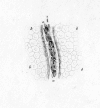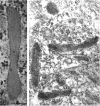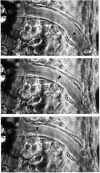The vessel wall and its interactions
- PMID: 18502843
- PMCID: PMC2396724
- DOI: 10.1182/blood-2008-01-078204
The vessel wall and its interactions
Abstract
Blood cell interactions with the vessel wall were first documented almost 170 years ago. Modern advances have revealed that leukocyte and platelet interactions with the endothelium are at the nexus of complex, dynamic cellular and molecular networks that, when dysregulated, may lead to pathological inflammation and thrombosis, which are major sources of morbidity and mortality in the Western world. In this review, we relate the history of blood cell interactions with the vasculature, discuss recent progress, and raise some unresolved questions awaiting the field.
Figures











References
-
- Wagner R. Leipzig, Germany: Leopold Voss; 1839. Erlauterungstaflen zur Physiologie und Entwicklungsgeschichte.
-
- Waller A. London, England: Edinb Dubl Phil Mag; 1846. Microscopic examination of some principal tissues of the animal frame as observed in the tongue of the living frog, toad, etc. Vol 29. pp. 271–297.
-
- Cohnheim J. London, England: The New Sydenham Society; 1889. Lectures on General Pathology: A Handbook for Practitioners and Students.
-
- Metchnikoff E. London, England: Paul Kegan, Trubner, Trench; 1893. Lectures on the comparative pathology of inflammation. Vol xii.
-
- Jackson SP. The growing complexity of platelet aggregation. Blood. 2007;109:5087–5095. - PubMed
Publication types
MeSH terms
Grants and funding
LinkOut - more resources
Full Text Sources
Other Literature Sources

